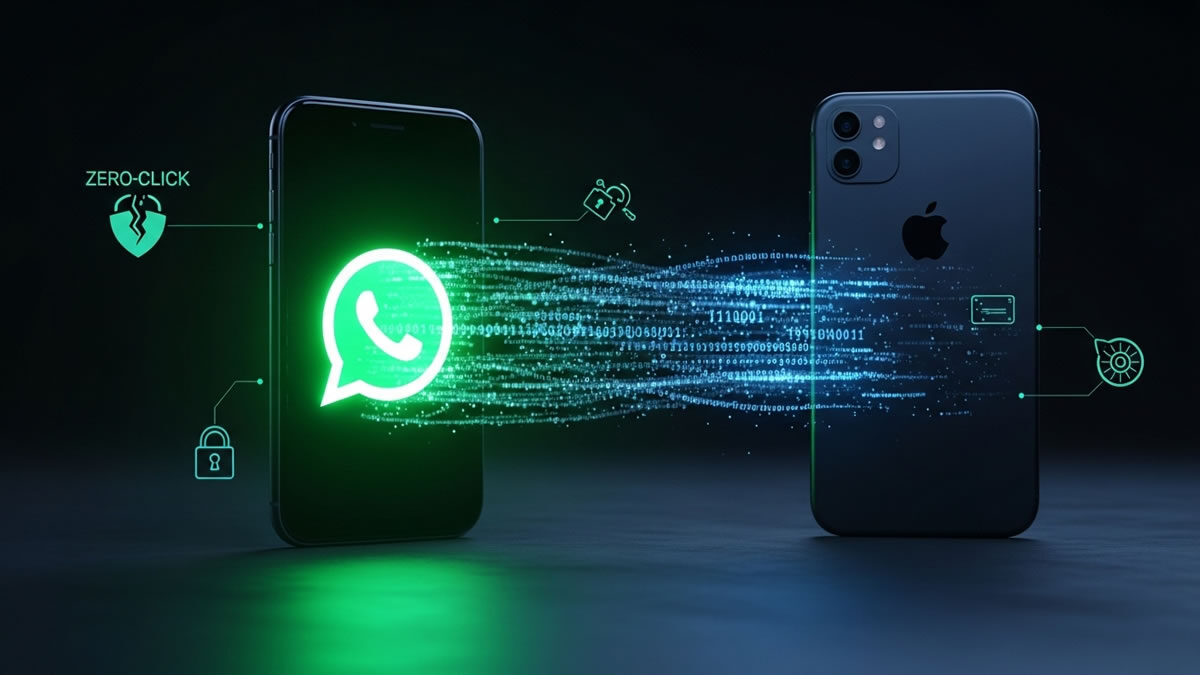WhatsApp announced that it had patched a severe safety vulnerability affecting the iOS and macOS apps. The deficiencies that are tracked as CVE-2025-55177 were utilized in combination with an Apple operating system error, CVE-2025-43300, to provide targeted spy programs to targeted users.
Stay up to date with the latest technology in TheTechCrunch.info, which covers artificial intelligence, mobile and web apps, modern things, cyber security, and general technical news. From AI’s successes to chat and generative tools, such as smartphones, laptops, and wearables’ special reviews, TheTechCrunch gives an insight into this case.
This phenomenon was particularly concerning because the attack served as the so-called utilization of zero-click, which means that the victims did not need to open an attachment to click on a malicious link or to agree on their equipment. For anyone using WhatsApp on iPhone, iPad, or Mac, this vulnerability represented one of the most dangerous threats seen in recent years.
How the exploit worked
WhatsApp Bug originated in the way the app took over the synchronization among primary equipment and linked customers, such as Mac. The incomplete authority allowed the attackers to abuse the synchronization system by sending the prepared requests, which forced the app to bring and process materials from arbitrary locations. In itself, this error can expose a device to manipulated data.
However, when the image of Apple is combined with iOS, it becomes more serious. Image io-bug was a real problem, a form of memory corruption when Apple devices tried to process some image files. Occasionally, the user can inject malicious image data into the device without the need for conversation, by interacting with Apple. At the moment, the device processed the data in the background, spyware payload was performed.
Scope of the attack
WhatsApp has emphasized that the campaign was limited in scale. Less than 200 users received information that they could affect. However, the small number does not make the attack less important. Evidence indicates that the victims were considered high risk: journalists, activists, and human rights guards.
Such people are often in the crosshairs of state surveillance operations, where the attackers have both resources and inspiration to distribute zero-day vulnerabilities. The Spyware campaign allegedly operated for about three months, which began in late May 2025, before it was discovered and neutralized. Although most of the daily users have never been targeted, this event emphasized the increasing processing of the Spyware tool and its use against civil society.
The danger of zero-click exploits
Zero-clicking weaknesses represent one of the most worrying categories of digital dangers. In most cyber-attacks, users have some control because the attack requires them to click on a suspicious link, open a shady file, or allow a supplement. With zero-click adventure, the security buffer disappears.
Utilization works automatically, and often manipulates the features designed to treat the material in the background, such as previewing an image or synchronization protocols. It also makes the most protective composition individuals weak, as nothing invites the necessary attack in their behavior.
In addition, attacks on zero clicks usually depend on zero-day weaknesses, which are unknown to suppliers until they are detected in nature. During that window, there is no available rescue beyond limiting exposure, which is rarely possible for mainstream apps such as WhatsApp.
The response from WhatsApp and Apple
When the weaknesses were discovered, both WhatsApp and Apple quickly released the patches. WhatsApp released certain versions of its iOS, Mac, and commercial apps. The company encouraged all users to update immediately, even if they were reported to be compromised.
At the same time, Apple packed the Imageio framework in its latest updates to iOS, iPadOS, and macOS, which closed the second part of the utilization series. Along with the solution, WhatsApp sent a direct threat to individuals who were targeted. This active communication helped these people with the most risk and allowed them to secure their equipment. Both companies reminded the need why regular updates for digital security.
Lessons for users
The most important thing for users is that living on old software is never safe. Even those who believe that they are not unnatural goals can still flow into attacks if the weaknesses remain unaddressed. The event of WhatsApp also shows how the attackers improved the chains in the chain in separate platforms to circumvent security.
A single app error may not be disastrous, but when an operating system is combined with errors, the results can be devastating. Apple users can enable several security features, such as Lockdown mode, to provide extra defense by limiting background processes that often utilize zero-click attacks. For high-risk individuals, it is especially important to maintain vigilance and respond quickly to update information.
Broader cybersecurity implications
The utilization of these errors reflects the increasing commercialization of spyware development. The sophisticated opponents, often supported by governments or private surveillance suppliers, invest time in zero-clicking options.
Their goal is not to infect a large number of people, but to compromise with people chosen carefully, of whom there is a minimal chance. This conversion of Mass Malware conversion from malware campaigns to highly targeted monitoring, where a minor error in message apps or system libraries may also be exploited.
For developers and platform suppliers, the challenge is very high: They should estimate the strategies for attacks that do not provide related weaknesses that appear to be displayed in apps and operating systems.
Explore a complete hub for the latest apps, smart things, and security updates online, ranging from AI-operated solutions and automation tools. TheTechCrunch.info offers in-depth articles, comparisons, and specialist analysis designed to understand the rapidly changing technology. Whether you are keen on robotics, data protection, or the latest digital trends.


